#赵长月er
Explore tagged Tumblr posts
Photo
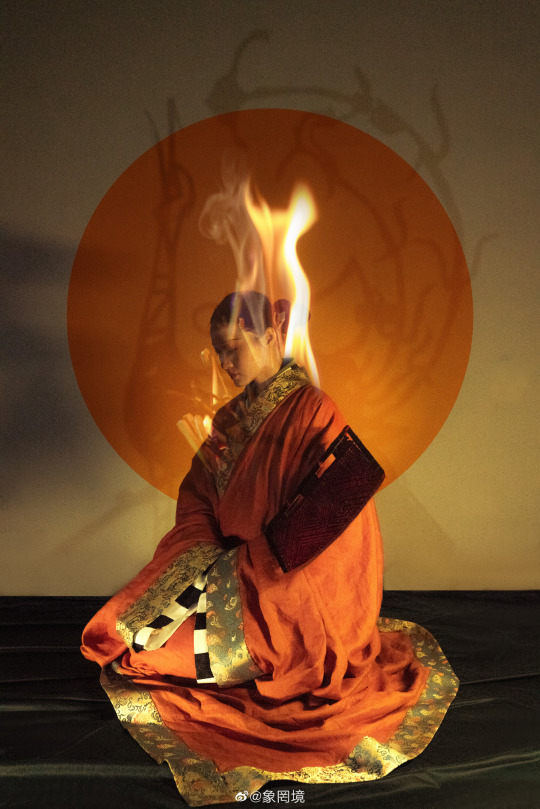
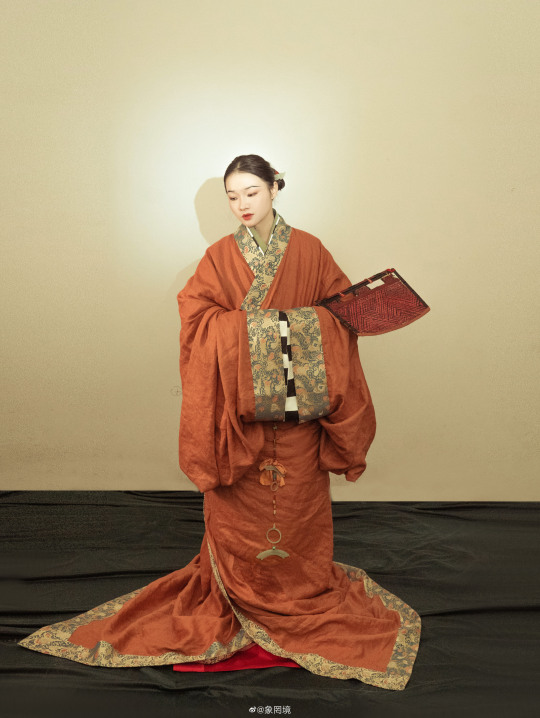

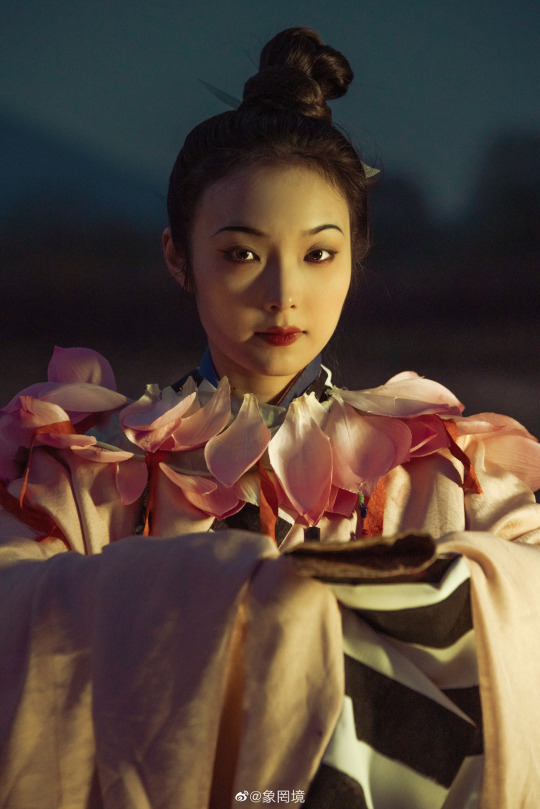
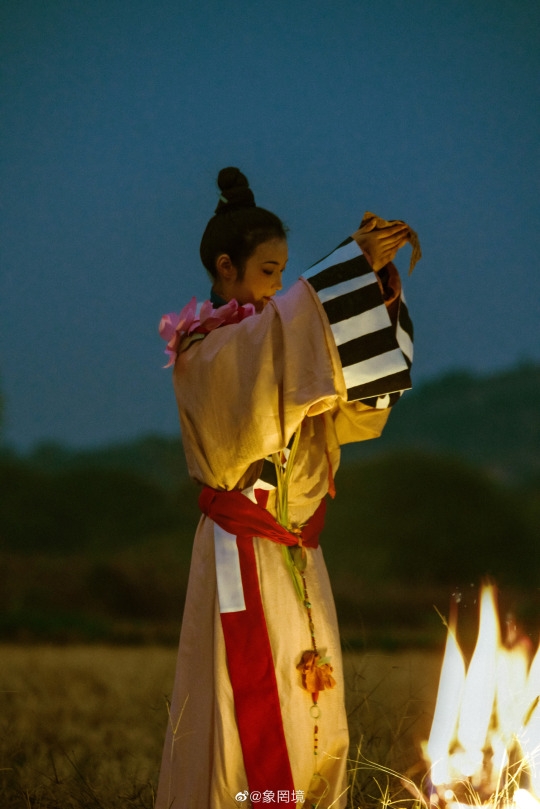
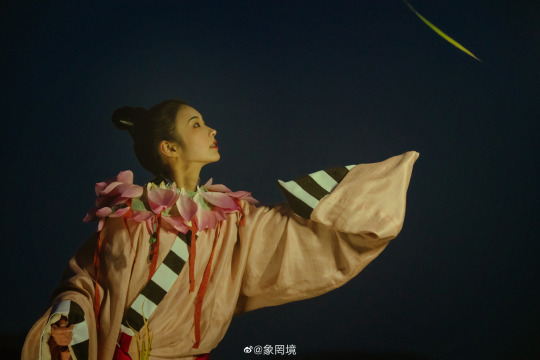
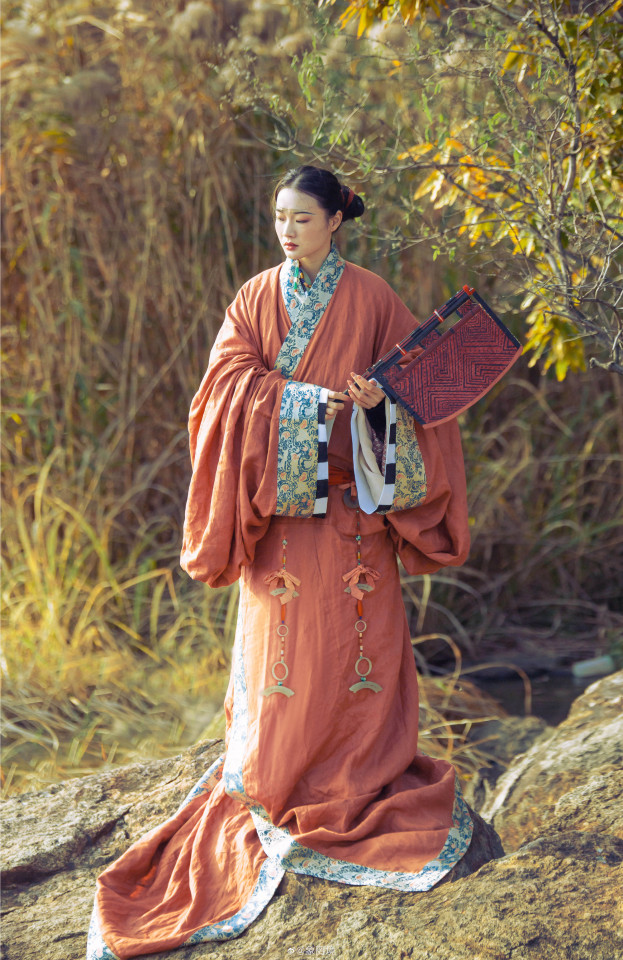
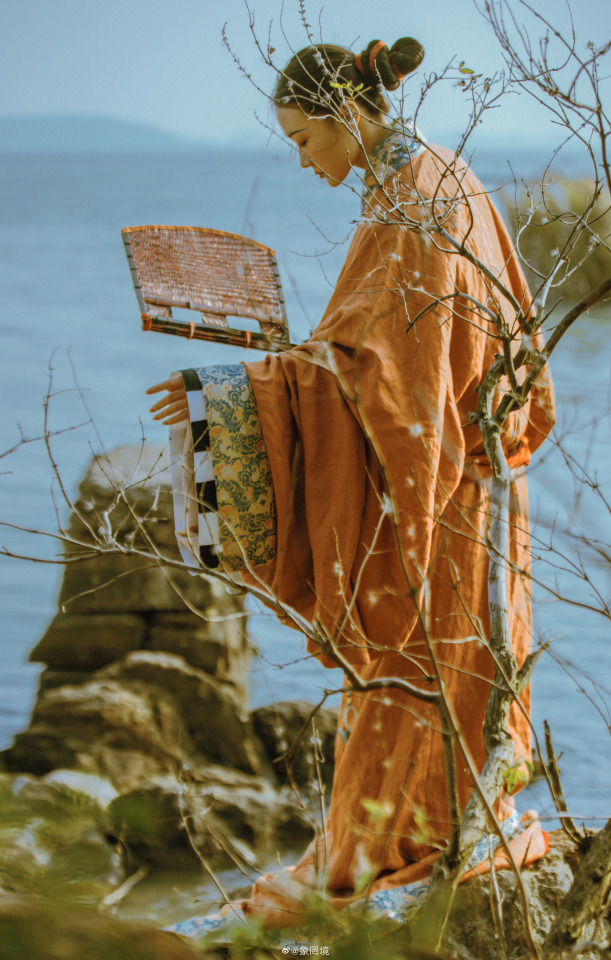
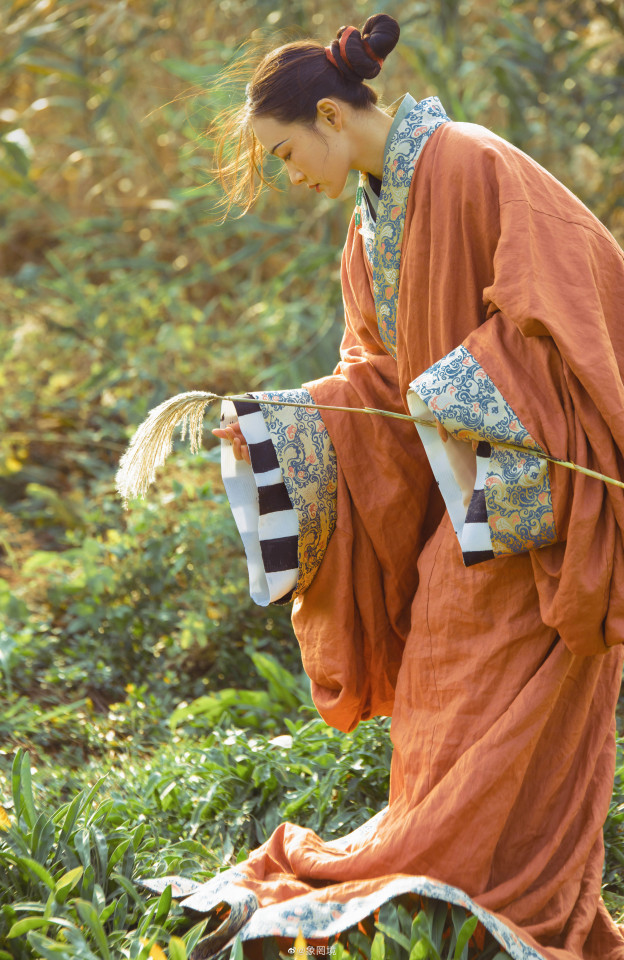
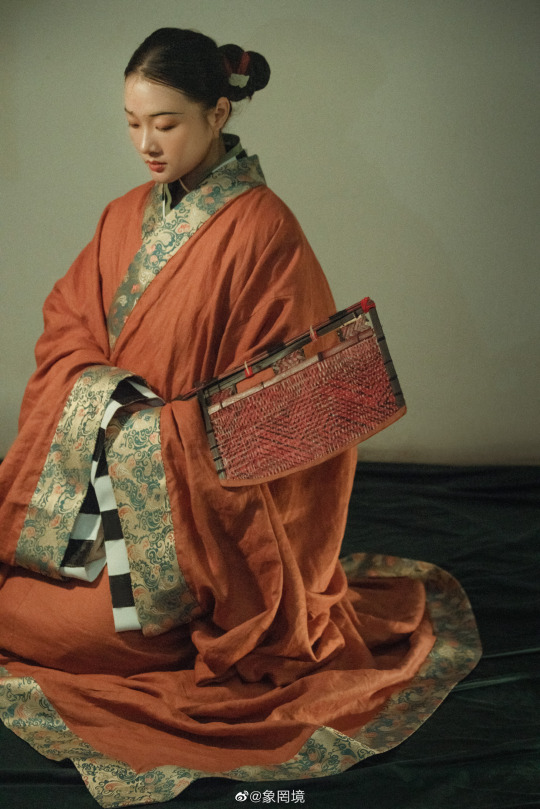

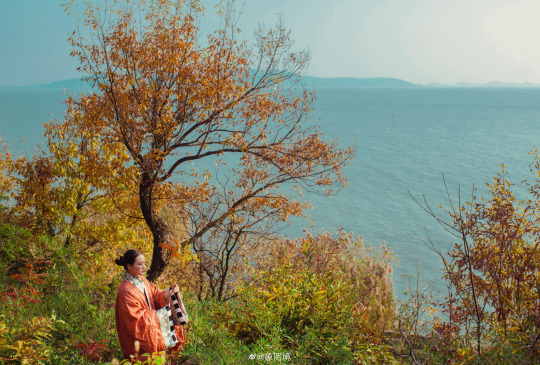

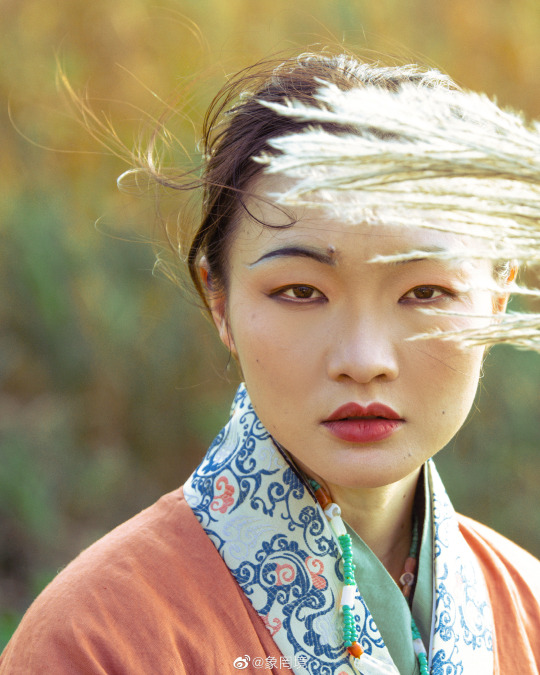
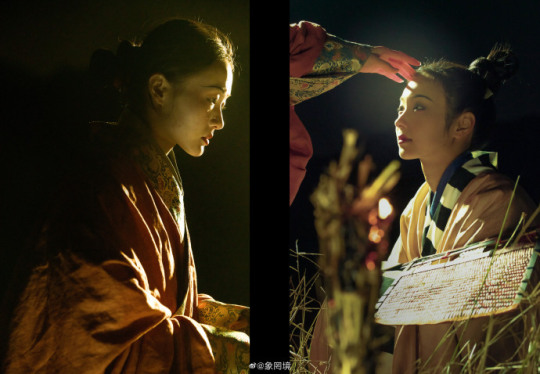
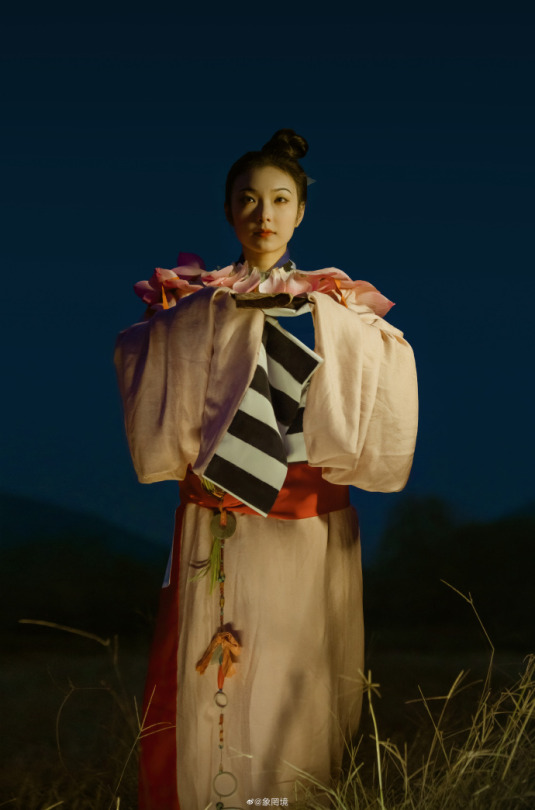
【Historical Artifact Reference】:
Warring States Period(475–221 BC) Silk painting:"Silk Painting of Figures, Dragons and Phoenixes"
Unearthed from Chu (state) Tomb in the southeastern suburb of Changsha City, Hunan Province.It is one of the earliest surviving Chinese silk paintings
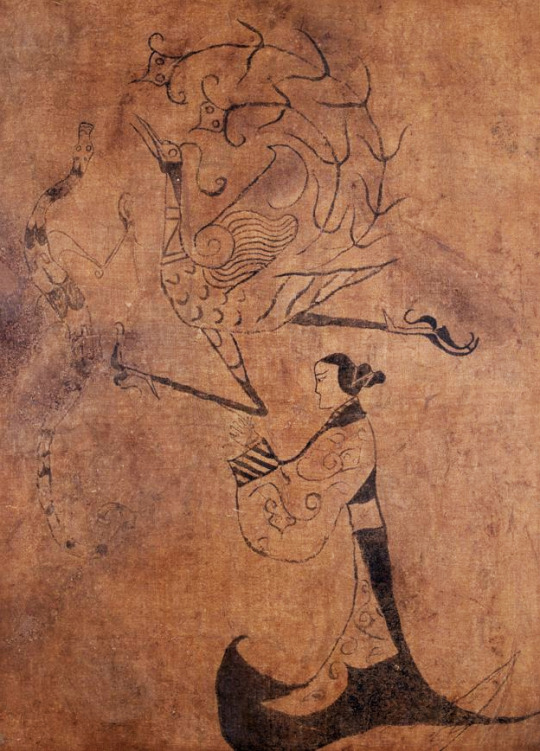
・Painted Wooden Figurines Unearthed from the Chu (state) of the Warring States Period Tomb

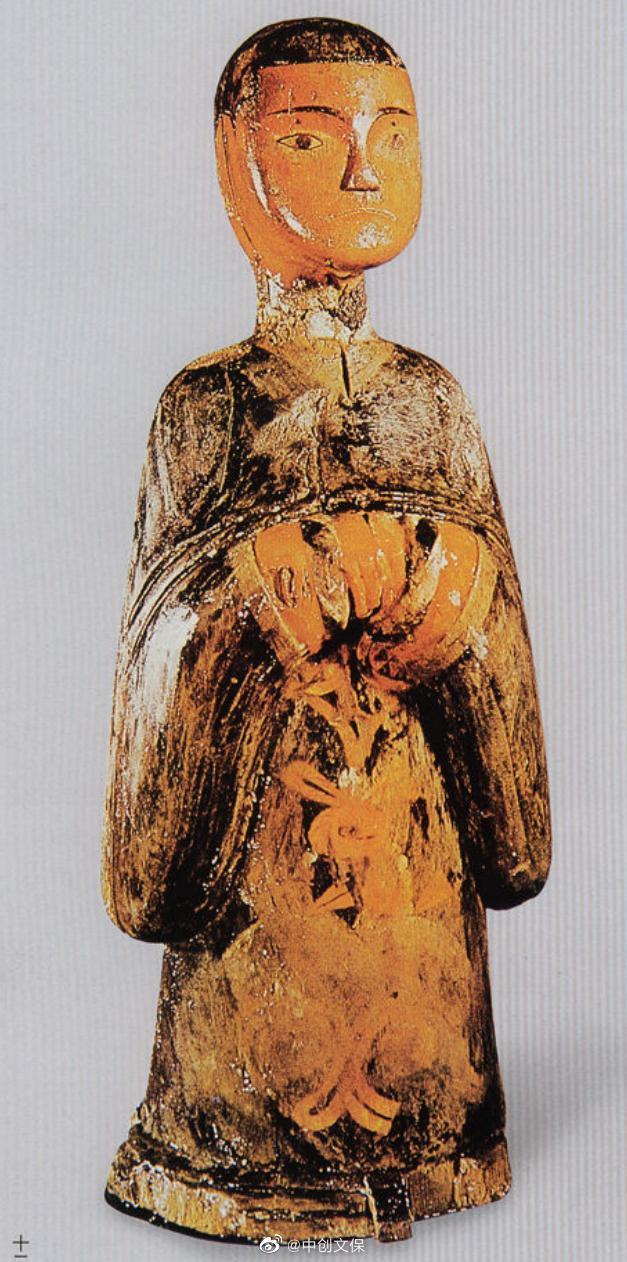
・ 直裾(one of the Deep garment) Unearthed from Mashan Chu State Tomb
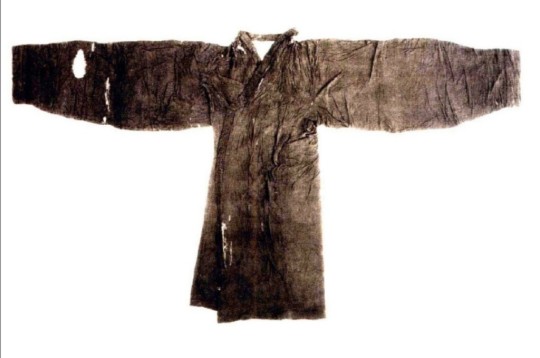
[Hanfu · 漢服]Chinese Warring States Period(475–221 BC) Chu (state) Traditional Clothing Hanfu Photoshoot Based On Relics
【History】
The creation of this photographic story is based on the Songs of Chu(楚辞) in the late Chu period"Nine Songs·Shao Si Ming/九歌·少司命":
" 荷衣兮蕙带,儵而来兮忽而逝". “Wearing a lotus dress and wearing a cypress belt, I suddenly come and suddenly leave“
people in Chu believed in 巫( "shaman" or "sorcerer")
_______
Planning | Photography: @象罔境
Model:段老师,@陈喜悦耶
Hairstyle: @赵长月er
Makeup | Jewelry & Fan Production: @象罔境
Hanfu Fabric: @慕予传统服饰工作室
🔗Weibo: https://weibo.com/2825602213/MmhGpxZMe
_______
#Chinese Hanfu#Chu (state)#Warring States Period(475–221 BC)#Pre-Qin#Nine Songs·Shao Si Ming/九歌·少司命#china history#hanfu history#archeology#chinese traditional clothing#Chinese Costume#recreation#chinese historical fashion#china#jade#shaman#象罔境#陈喜悦耶#赵长月er#慕予传统服饰工作室#chinese#Chinese Aesthetics#漢服#汉服#楚国
598 notes
·
View notes
Text
How To Name Your Chinese Characters:
1) LAST NAMES:
I’ve pasted the Top 100 common last names in alphabetical order, and bolded the ones that appear in CQL:
B: 白 Bai C: 蔡 Cai ; 曹 Cao ; 常 Chang ; 曾 Ceng ; 陈 Chen ; 程 Cheng ; 崔 Cui ; D: 戴 Dai ; 邓 Deng ; 丁 Ding ; 董 Dong ; 杜 Du ; F: 范 Fan ; 方 Fang ; 冯 Feng ; 付 Fu ; G: 高 Gao ; 葛 Ge ; 龚 Gong ; 顾 Gu ; 郭 Guo ; H: 韩 Han ; 何 He ; 贺 He 洪 Hong ; 侯 Hou ; 黄 Hua ; 胡 Hu ; J: 贾 Jia ; 蒋 Jiang ; 姜 Jiang ; 江 Jiang ; 金 Jin ; K: 康 Kang ; L: 赖 Lai ; 李 Li ; 黎 Li ; 廖 Liao ; 梁 Liang ; 林 Lin ; 刘 Liu ; 陆 Lu ; 卢 Lu ; 路 Lu ; 吕 Lü ; 罗 Luo ; M: 马 Ma ; 麦 Mai ; 毛 Mao ; 孟 Meng ; N: 倪 Ni ; 牛 Niu ; P: 潘 Pan ; 彭 Peng ; Q: 钱 Qian ; 秦 Qin ; 邱 Qiu ; R:任 Ren ; S: 邵 Shao ; 沈 Sheng ; 史 Shi ; 石 Shi ; 施 Shi ; 宋 Song ; 苏 Su ; 孙 Sun ; T: 陶 Tao ; 谭 Tan ; 唐 Tang ; 田 Tian ; W: 万 Wan ; 王 Wang ; 汪 Wang ; 魏 Wei ; 吴 Wu ; X: 邢 Xing ; 夏 Xia ; 蕭 Xiao ; 谢 Xie ; 徐 Xu ; 许 Xu ; 薛 Xue ; Y: 阎 Yan ; 严 Yan ; 杨 Yang ; 姚 Yao ; 叶 Ye ; 余 Yu ; 于 Yu ; 袁 Yuan ; Z: 张 Zhang ; 赵 Zhao ; 郑 Zheng ; 钟 Zhong ; 周 Zhou ; 朱 Zhu ; 庄 Zhuang ; 邹 Zou ;
Above are all single character last names, but there are some double character Chinese last names, seen below (list not exhaustive):
独孤 Du’Gu ; 公孙 Gong’Sun ; 南宫 Nan’Gong 欧阳 Ou’Yang ; 司马 Si’Ma ; 上官 Shang’Guan ; 宇文 Yu’Wen ; 长孙 Zhang’Sun ; 诸葛 Zhu’GE ;
2) GIVEN NAMES/COURTESY NAMES
《Elements》:
Light*: 光 (guāng) - light, 亮 liàng - bright / shine, 明 (míng) - bright, 曦 (xī) - early dawn, 昀 (yún) - daylight, 昭 (zhāo) - light, clear,照 (zhào) - to shine upon,
Fire: 焰 (yàn) - flames, 烟 (yān) - smoke,炎 (yán) - heat/burn, 烨 (yè) - dazzling light,
Water: also see “weather” OR “bodies of water” under nature; note the words below while are related to water have meanings that mean some kind of virtue: 清 (qīng) - clarity / purity, 澄 (chéng) - clarity/quiet, 澈 (chè) - clear/penetrating, 涟 (lián) - ripple, 漪 (yī) - ripple, 泓 (hóng) - vast water, 湛 (zhàn) - clear/crystal, 露 (lù) - dew, 泠 (líng) - cool, cold, 涛 (tāo) - big wave,泽 (zé),浩 hào - grand/vast (water),涵 (han) - deep submergence / tolerance / educated
Weather: 雨 (yǔ) - rain, 霖 (lín) - downpouring rain, 冰 (bīng) - ice, 雪 (xuě) - snow, 霜 (shuāng) - frost
Wind: 风 (fēng) - wind
* some “Light” words overlap in meaning with words that mean “sun/day”
《Nature》:
Season: 春 (chūn) - spring, 夏 (xià) - summer, 秋 (qíu) - aumtum, 冬 (dōng) - winter
Time of Day: 朝 (zhāo) - early morning / toward, 晨 (chén) - morning / dawn, 晓 (xiǎo) - morning, 旭 (xù) - dawn/rising sun,昼 (zhòu) - day,皖 (wǎn) - late evening,夜 (yè) - night
Star/Sky/Space: 云 (yún) - cloud,天 (tiān) - sky/ heaven,霞 (xiá) - afterglow of a rising or setting sun,月 (yuè) - moon,日 (ri) - day / sun,阳 (yáng) - sun,宇 (yǔ) - space,星 (xīng) - star
Birds: 燕 (yàn) - sparrow, 雁 (yàn) - loon, 莺 (yīng) - oriole, 鸢 (yuān) - kite bird (family Accipitridae),羽 (yǔ) - feather
Creatures: 龙 (lóng) - dragon/imperial
Plants/Flowers:* 兰 (lán) - orchids, 竹 (zhú) - bamboo, 筠 (yún) - tough exterior of bamboos, 萱 (xuān) - day-lily, 松 (sōng) - pine, 叶 (yè) - leaf, 枫 (fēng) - maple, 柏 bó/bǎi - cedar/cypress, 梅 (méi) - plum, 丹 (dān) - peony
Mountains: 山 (shān), 峰 (fēng) - summit, 峥 (zhēng),
Bodies of water: 江 (jiāng) - large river/straits, 河 (hé) - river, 湖 (hú) - lake, 海 (hǎi) - sea, 溪 (xī) - stream, 池 (chí) - pond, 潭 (tán) - larger pond, 洋 (yáng) - ocean
* I didn’t include a lot of flower names because it’s very easy to name a character with flowers that heavily implies she’s a prostitute.
《Virtues》:
Astuteness: 睿 ruì - astute / foresight, 智 (zhi), 慧 (hui), 哲 (zhé) - wise/philosophy,
Educated: 博 (bó) - extensively educated, 墨 (mo) - ink, 诗 (shi) - poetry / literature, 文 (wén) - language / gentle / literary, 学 (xue) - study, 彦 (yàn) - accomplished / knowledgeable, 知 (zhi) - to know, 斌 (bīn) - refined, 赋 (fù) - to be endowed with knowledge
Loyalty: 忠 (zhōng) - loyal, 真 (zhēn) - true
Bravery: ��� (yǒng) - brave, 杰 (jié) - outstanding, hero
Determination/Perseverance: 毅 (yì) - resolute / brave, 恒 (héng) - everlasting, 衡 (héng) - across, to judge/evaluate,成 (chéng) - to succeed, 志 (zhì) - aspiration / the will
Goodness/Kindness: 嘉 (jiā) - excellent / auspicious,磊 (lěi) - rock / open & honest, 正 (zhèng) - straight / upright / principle,
Elegance: 雅 (yǎ) - elegant, 庄 (zhuāng) - respectful/formal/solemn, 彬 (bīn) - refined / polite,
Handsome: 俊 jùn - handsome/talented
Peace: 宁 (níng) - quietness/to pacify, 安 (ān) - peace, safety
Grandness/Excellence:宏 (hóng) - grand,豪 (háo) - grand, heroic,昊 (hào) - limitless / the vast sky,华 (huá) - magnificent, 赫 (hè) - red/famous/great, 隆 (lóng) - magnificent, 伟 (wěi) - greatness / large,轩 (xuān) - pavilion with a view/high,卓 (zhuó) - outstanding
Female Descriptor/Virtues/Beauty: 婉 (wǎn),惠 (huì), 妮 (nī), 娇 (jiāo), 娥 (é), 婵 (chán) (I didn’t include specific translations for these because they’re all adjectives for women meaning beauty or virtue)
《Descriptors》:
Adverbs: 如 (rú) - as,若 (ruò) - as, alike,宛 (wǎn) - like / as though,
Verbs: 飞 (fēi) - to fly, 顾 (gù) - to think/consider, 怀 (huái) - to miss, to possess, 落(luò) - to fall, to leave behind,梦 (mèng) - to dream, 思 (sī) - to consider / to miss (someone),忆 (yì) - memory, 希 (xī) - yearn / admire
Colours: 红 (hóng) - red, 赤 (chì) - crimson, 黄 (huàng) - yellow, 碧 (bì) - green,青(qīng) - azure,蓝 (lán) - blue, 紫 (zǐ) - violet ,玄 (xuán) - black, 白 (baí) - white
Number:一 (yī), 二 (er) - two, 三 (san) - three, 四 (si) - four, 五 (wu) - five, 六 (liu) - six, 七(qi) - seven, 八 (ba) - eight, 九 (jiu) - nine, 十 (shi) - ten
Direction: 东 (dōng) - east, 西 (xi) - west, 南 (nan) - south, 北 (bei) - north,
Other: 子 (zǐ) - child, 然 (rán) - correct / thusly
《Jade》: *there are SO MANY words that generally mean some kind of jade, bc when ppl put jade in their children’s name they don’t literally mean the rock, it’s used to symbolize purity, goodness, kindness, beauty, virtue etc* 琛 (chen), 瑶 (yao), 玥 (yue), 琪 (qi), 琳 (lin)
《Spirituality》
凡 (fan) - mortality
色 (se) - colour, beauty. In buddhism, “se” symbolizes everything secular
了 (liao) - finished, done, letting go
尘 (chen) - dust, I’m not… versed in buddhism enough to explain “chen”, it’s similar to “se”
悟 (wu) - knowing? Cognition? To understand a higher meaning
无 (wu) - nothing, the void, also part of like “letting go”
戒 (jie) - to “quit”, but not in a bad way. In buddhism, monks are supposed to “quit” their earthly desires.
极 (ji) - greatness, also related to the state of nirvana (? I think?)
#cql#the untamed#because i have gotten many many many asks about how to name characters#language#master list
11K notes
·
View notes
Photo
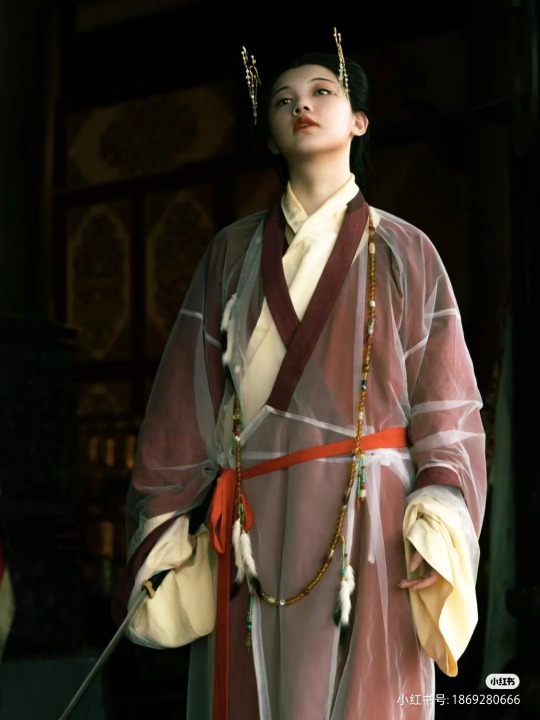
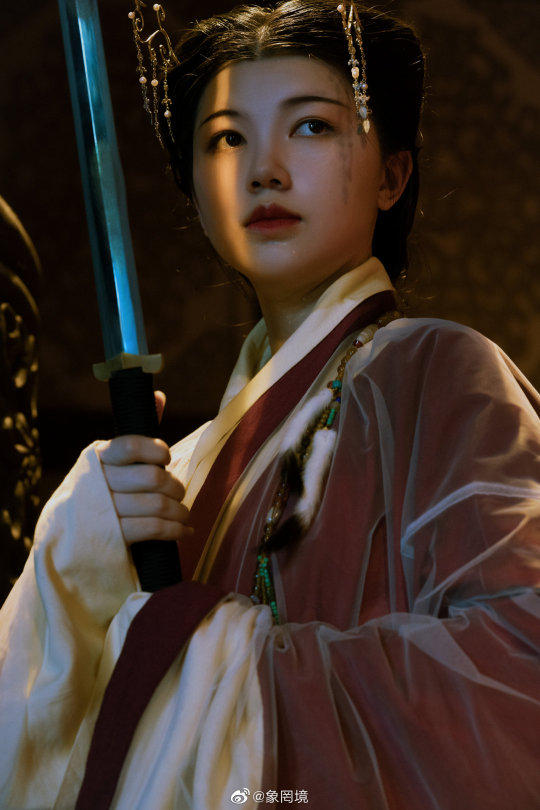






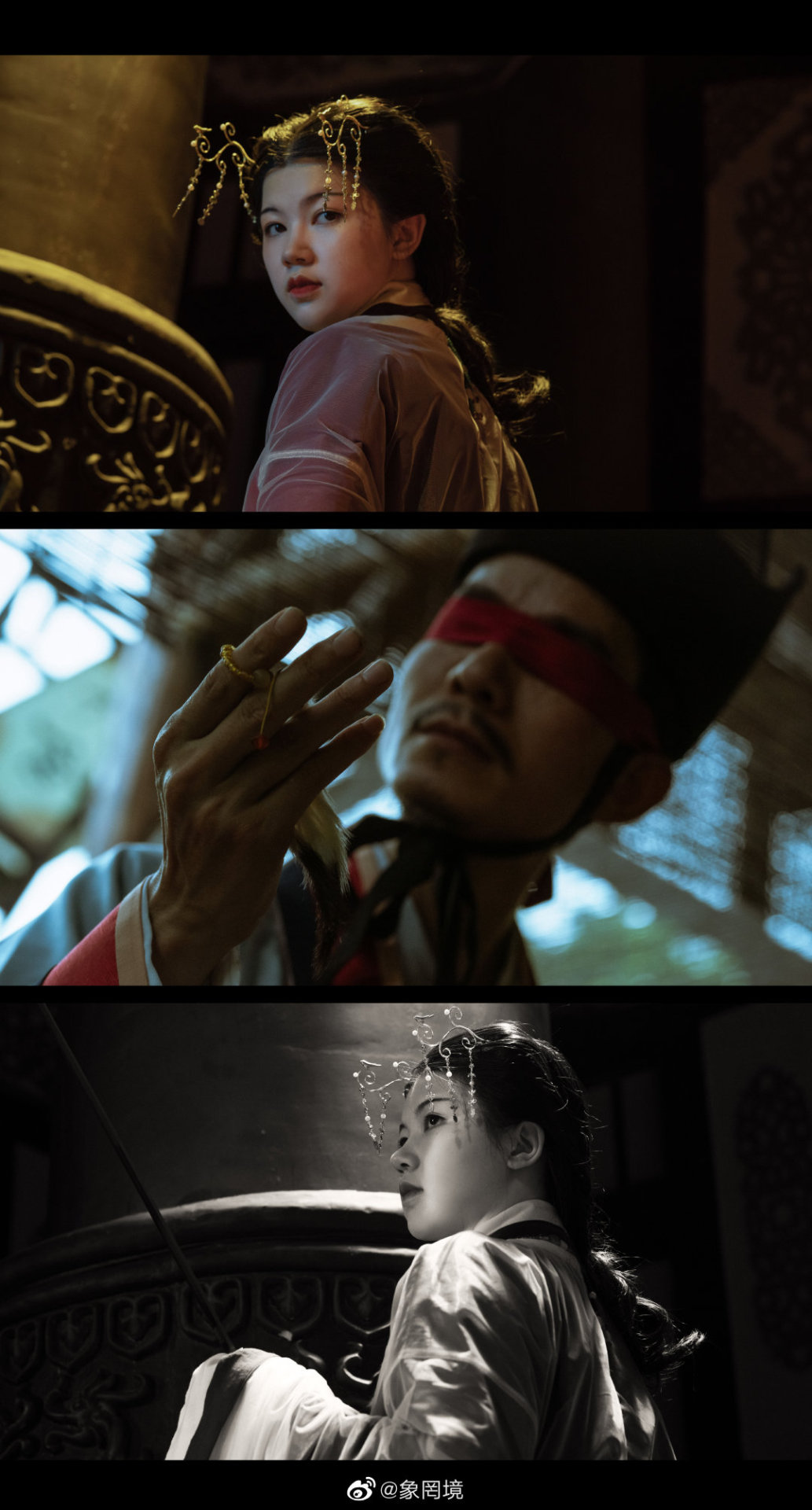

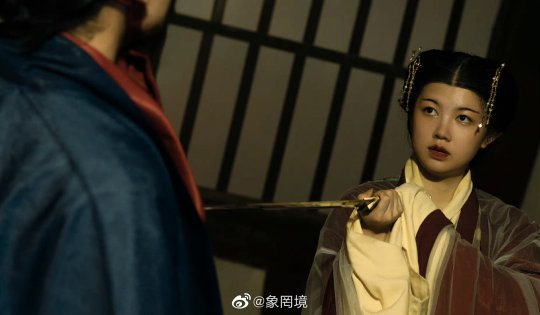


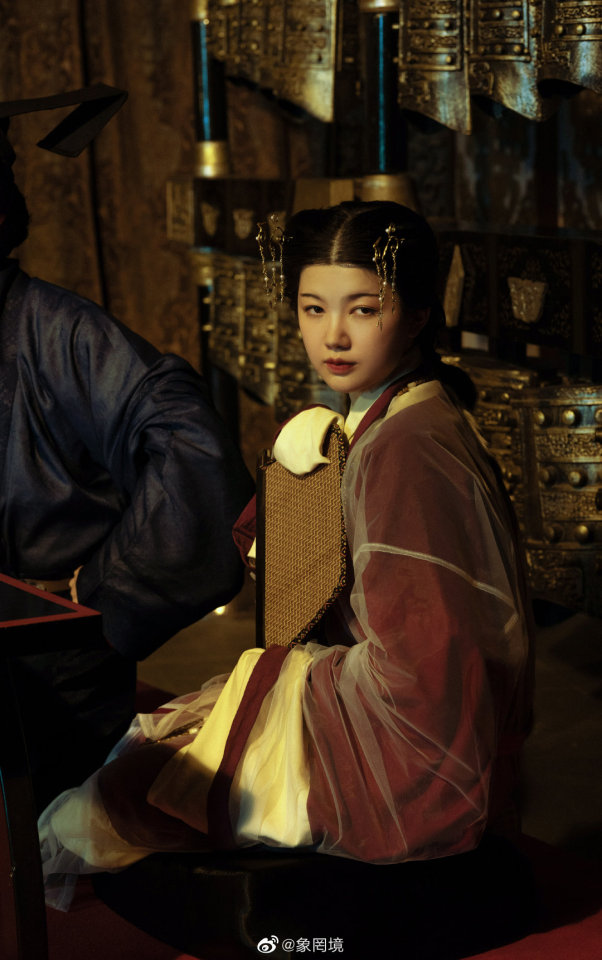

【Artifact Reference】
China Western Han Dynasty "Crown Man" figurine, unearthed from Mawangdui Tomb No. 1 in Changsha, Hunan
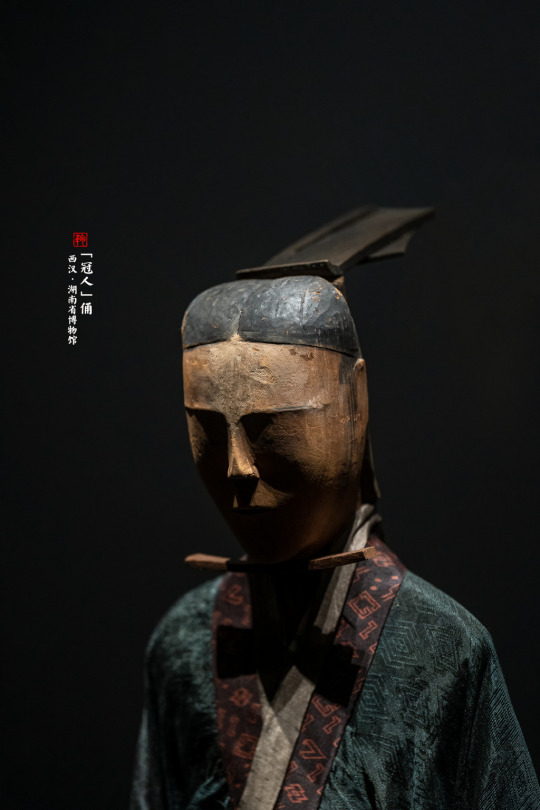
China Western Han Dynasty Sitting Female Figurines

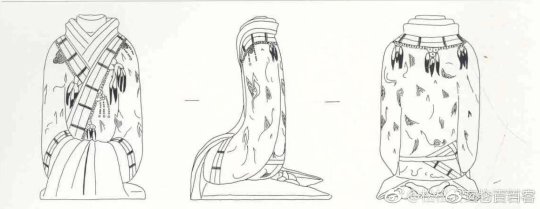
China Western Han Dynasty Painted Female Figurines (early and middle period of Western Han)


China National Museum Western Han Dynasty Woman Restoration Wax Sculpture

・Printed colored yarn silk cotton robe Mawangdui No. 1 Han Tomb (Xin Chai)
Material: SilkSize: Dress length 132 cm, sleeve length 228 cm

・Plain yarn garment (straight) Mawangdui No. 1 Han Tomb (Xinzhui)
material: silk,size: dress length 132 cm, sleeve length 181.5 cm
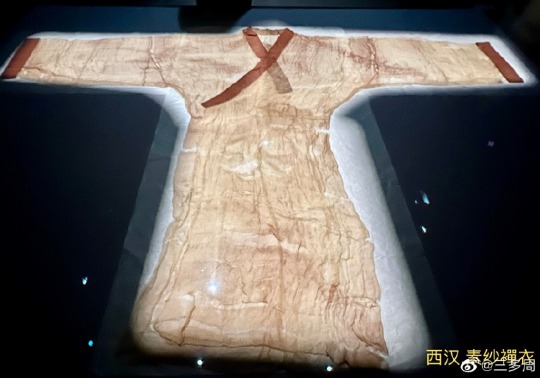
[Hanfu · 漢服]China Western Han Dynasty Chinese Traditional Clothing Hanfu Photoshoots Based On Relics
“汝作天地之气,无名无姓。且唤妄,可随大道去”
_______
📝 Plan: @仑百百客 & @象罔境
📸Photo: @象罔境
💄Stylist: @赵长月er 、@软绵绵的桃金娘
🧚🏻 Model: @仑百百客 @常任闲杂人等@爱穿汉服的曠先生
💎 Hair Accessories: @仑百百客
🗡️ Han Dynasty Sword: @爱穿汉服的曠先生
🔗Weibo:https://weibo.com/2825602213/MbsCIbGoJ
_______
#Chinese Hanfu#Western Han Dynasty#Han Dynasty#chinese history#hanfu#chinese#chinese traditional clothing#chinese coustume#chinese relics#hanfu accessories#hanfu art#Chinese Culture#China History#hanfu photoshoot#chinese historical fashion#漢服#汉服#仑百百客#象罔境#赵长月er#软绵绵的桃金娘#常任闲杂人等#爱穿汉服的曠先生#汉代#直裾#素纱禅衣
229 notes
·
View notes
Video
tumblr
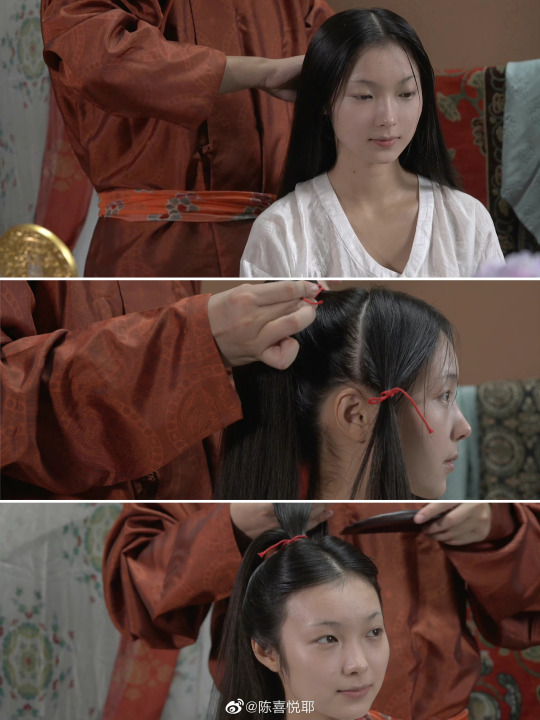
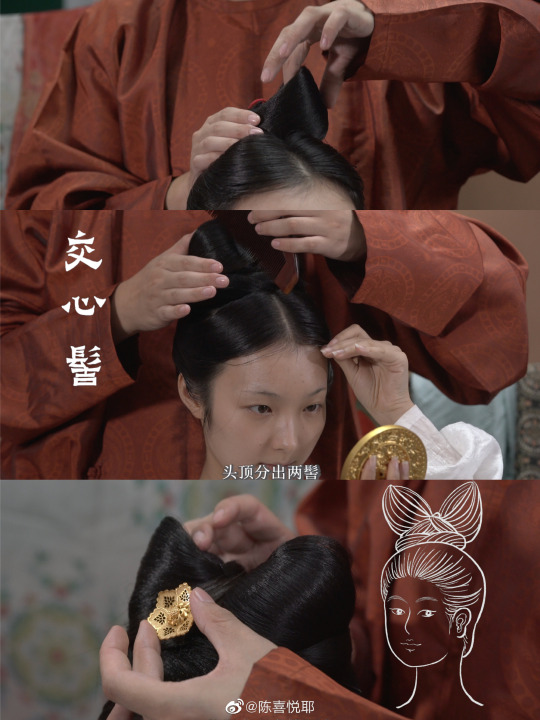
【STEP 1】 use your comb to brush your hair into a "交心髻/cross-heart bun"

【STEP 2】 Drawing your eyebrow into a "连心眉/连眉 or 阔眉”, Zhou dynasty 武周时期 (690–705),which is Wu Zetian period, This kind of eyebrows was very popular in Wu Zetian period.The front part of the eyebrows are almost connected, so it is called "连心眉”
--
【STEP 3】Apply rouge (胭脂) on the cheeks of the face coat with lead powder
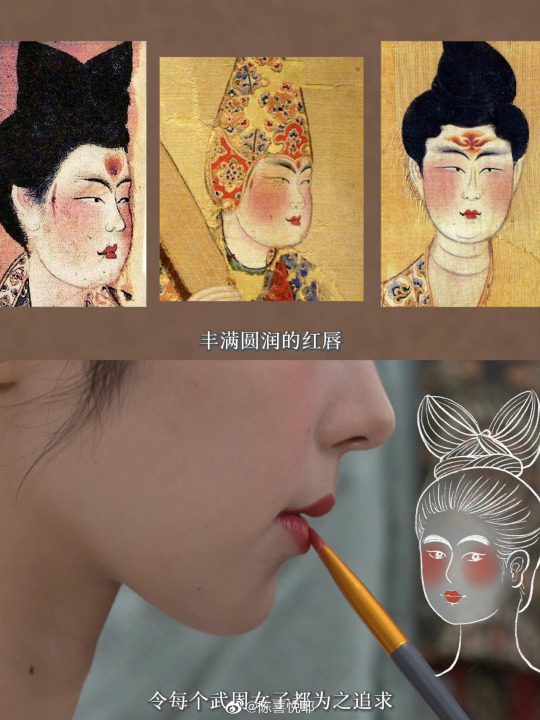
【STEP 4】Apply Red lip Grease, plump and round red lips are the pursuit of every woman in Wu Zetian period.

【STEP 5】: Draw XieHong (斜红/ Xi�� hóng ) & Draw Huazi / Huadian (花子/ 花钿)
Xie Hong is a special kind of face decoration in ancient times. When dressing up, a red crescent is drawn on both sides of a woman’s eyes.
Huazi / Huadian Is a form of traditional Chinese ornamental forehead makeup, which is located between the eyebrows and sometimes on the cheeks
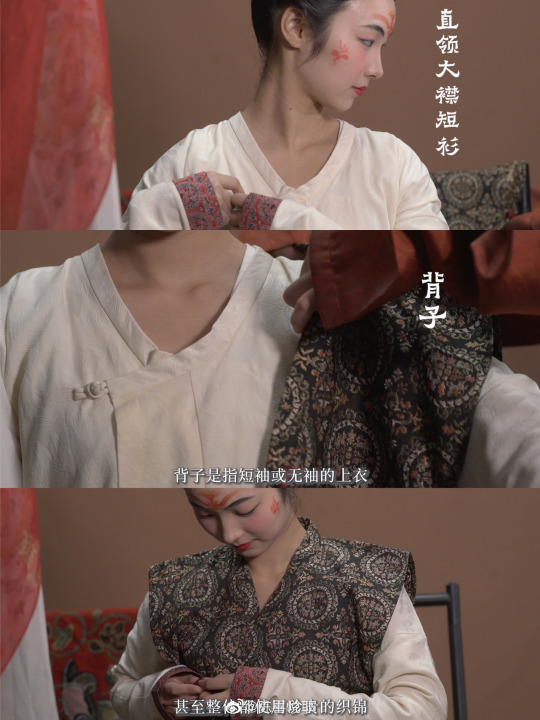
【STEP 5】: Wear “直领大襟短衫” & “背子 / 唐背子”
背子 / 背子: Refers to short-sleeved or sleeveless tops, It can be worn with the top hem putting in the outside or putting in the inside the skirt.

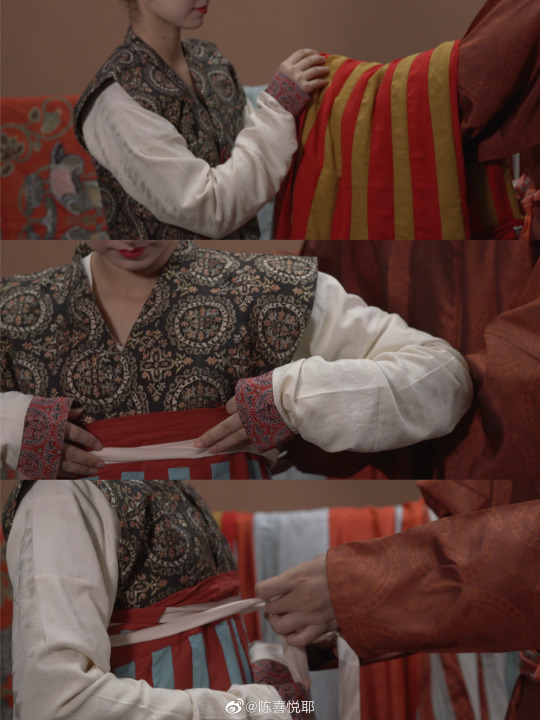
【STEP 6】: Wear “间���/间色裙 ( inter-color skirts ) ”
In the Wei and Jin Dynasties, there were already have inter-color skirts, which were popular until the Sui and Tang Dynasties.
Cut two-color or multi-color fabrics into strips that are narrow at the top and wide at the bottom stitched together.
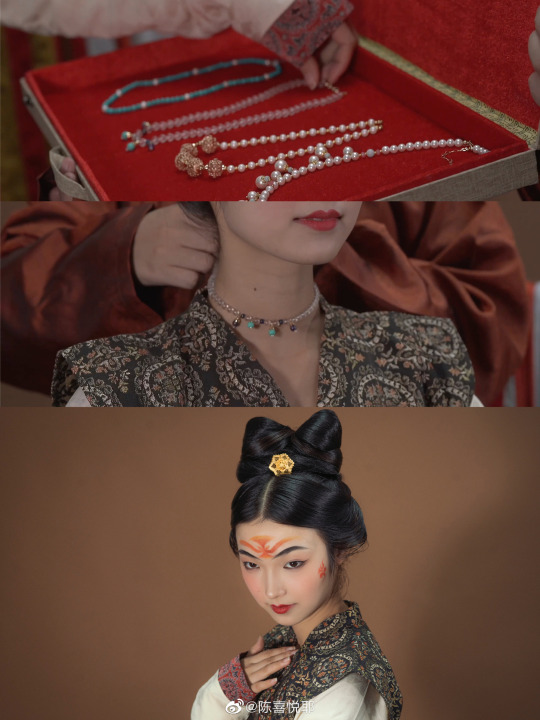
【STEP 7】:Put on a necklace, Finish
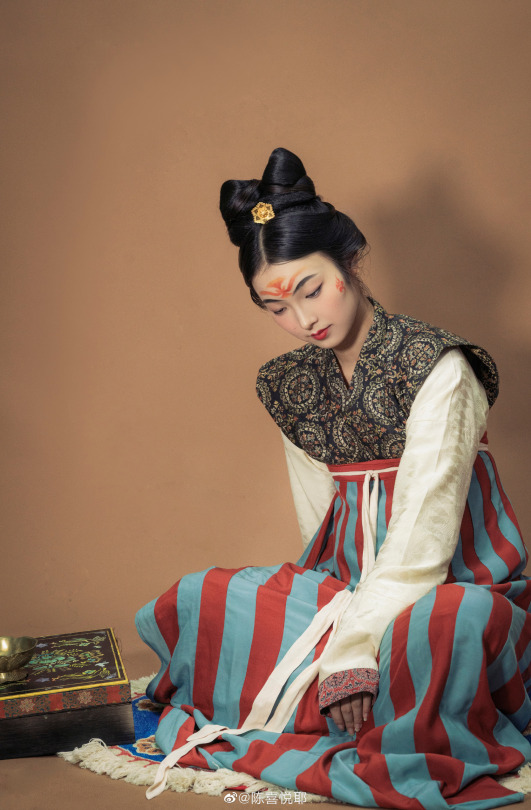

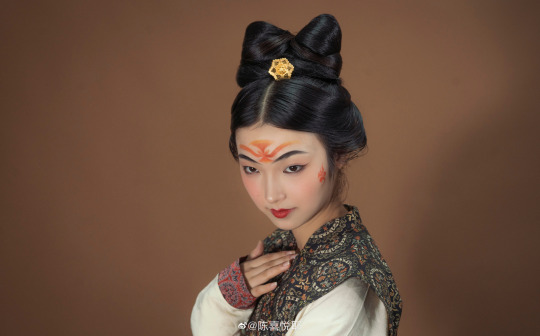
[Hanfu · 漢服]The Morning of Noble Women in Zhou Dynasty (Wu Zetian period)——How women of the Tang Dynasty Overcame Double Ninth Festival
------------
In the Tang Dynasty, chrysanthemums had not yet cultivated complex varieties. White, yellow, pink-purple daisies may be common chrysanthemums in the Tang Dynasty.
Worship ancestors and gods, watching chrysanthemums, and wear the zhuyu (茱萸) plant Cornus officinalis. (Both chrysanthemum and zhuyu are considered to have cleansing qualities and are used on other occasions to air out houses and cure illnesses.),eat Double Ninth Cake, hold a banquet, climb mountains and pray for luck, these are the customs of the Double Ninth Festival in ancient times.
_______
Plan:@ 陈喜悦耶、@象罔境
📸Photo: @象罔境
🧚🏻Model/Copywriting/Voiceover/Editing :@陈喜悦耶
💄Makeup: @象罔境 、@赵长月er
Carpet : @贞观唐荟要
🔗Weibo:https://weibo.com/6425876323/M8CwizPTt
_______
#chinese hanfu#Double Ninth Festival#Chong Yang Festival#Wu Zetian period#Zhou Dynasty#Tang Dynasty#hanfu accessories#China History#traditional Chinese holiday#chinese historical fashion#chinese traditional clothing#chinese culture#chinese art#chinese makeup#chinese history#chinese style#historical fashion#重陽節#重阳糕#武周贵族女子的清晨#唐代靓女如何过重阳#陈喜悦耶#象罔境#赵长月er#贞观唐荟要#漢服#汉服
322 notes
·
View notes